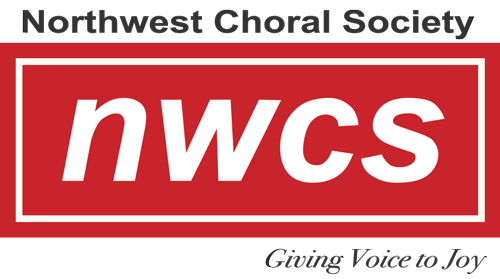“If Music Be the Food of Love”
by Kevin Kelly
Today concertgoers may know Brahms best for his instrumental music, in particular the four symphonies, four concertos, much chamber music and many piano works, large and small, plus the German Requiem. Fans of vocal and choral music will also know that, like all the composers represented on this concert, Brahms wrote magnificently and copiously for the voice, including songs, song cycles, folksong settings, and many small and larger works for male, female and four-part choirs. Among his earliest successes was his first set of Liebeslieder Walzer (“Love Song Waltzes”), Op. 52, for vocal quartet and piano duet. He wrote a second set five years later. As a pianist himself and a conductor of amateur choirs, Brahms intended these for private entertainment and casual social occasions. He adapted texts from Georg Friedrich Daumer’s Polydora, a collection of folk poems that explore all aspects of love—flirtatious, passionate, frustrated, blissful—and he took musical inspiration from both Franz Schubert and from the Waltz King himself, Johann Strauss Jr.
John Dowland was a composer and virtuoso lutenist who began his career in the French court in Paris, spent time as lutenist to Christian IV of Denmark and ended as one of the “musicians for the lutes” to King James I. His music is some of the finest ever written for the lute, including some 90 works for solo lute and 88 lute songs, of which “Come again” is a delightful early example, in both solo and four-voice versions.
Henry Purcell too was known for his more than 100 songs, as well as instrumental, vocal and choral music for the English church, the stage, the court and private entertainment. He held posts through the reigns of Charles II, James II and William and Mary. Purcell set Henry Heveningham’s poem “If music be the food of love” (which borrows its opening line from Shakespeare’s Twelfth Night) three times for solo voice and harpsichord. Tonight we sing the first version, from 1692, in an anonymous four-part choral arrangement.
William Billings lived in Boston during the Revolutionary War era, was active in patriot circles—where he knew Samuel Adams and Paul Revere—tanned hides professionally, and was a prolific composer and itinerant teacher of singing. His New England Psalm-Singer was the first tunebook written and compiled by a single American composer. The anthem “I Am the Rose of Sharon,” which sets texts from the Song of Solomon, appeared in Billings’ second collection, The Singing Master’s Assistant, in 1778. He uses a sectional compositional technique, with changes in meter, tempo, voicing and musical motive to express the contrasts in the poetry.
Eric Whitacre, one of our best-known current choral composers, originally imagined his Five Hebrew Love Songs in 1996 as a set of “troubadour songs” for piano, violin and soprano, asking his then-girlfriend (now wife), the soprano Hila Plitmann, for a few “postcards” in her native tongue. “A few days later,” says Whitacre, “she presented me with these exquisite and delicate Hebrew poems,” which he later adapted for chorus. “Each of the songs captures a moment that Hila and I shared together. ‘Kalá Kallá’ (which means ‘light bride’) was a pun I came up with while she was first teaching me Hebrew. The bells at the beginning of ‘Éyze Shéleg!’ are the exact pitches that awakened us each morning in Germany as they rang from a nearby cathedral, and we really did see the most astonishing snowflakes falling from the sky.”
The name Sydney Carter may not be familiar, unless you happen to know that he wrote the song “Lord of the Dance” (set to a tune by another composer). The English poet and folk musician often wrote songs with overt or implied religious themes, though his theology, a friend said, “was always to question and to doubt.” “To the First of My Lovers” straddles the sacred and the secular, while arranger Craig Hella Johnson superimposes lines from the Advent hymn “Oh Lord, how shall I meet thee.”
Gwyneth Walker has written more than 350 commissioned works for orchestra, chamber ensembles, chorus and solo voice. Fellow composer Carson Cooman says, “Her work is characterized by a tremendous energy and a strong sense of humor. Even in her most calm and serene pieces, there is a constant undercurrent of energy—a lifeblood that ties the music together.” Walker’s Love—By the Water contains three ballads about love and water, exploring, expanding and updating the originals. The first of these, “Blow the Candles Out,” exists with many sets of lyrics. “The most American version,” she writes, “with reference to Portland, Maine, has been selected. The piano accompaniment is created from patterns suggestive of ocean waves and candlelight.”
In “Dance for Love,” the American composer and conductor Z. Randall Stroope sets a Civil War poem from 1865 by William Straub. Stroope writes: “In this work, the person has survived the ravages of war, and now eagerly turns homeward—walking, even dancing (‘bare feet dance me home’) past ‘furrowed fields and gentle rain on summer wheat.’ Sarah, who has waited years for his reunion, is just beyond the ‘old gray mill and the meadow’s brow.’ ‘The cannons are silent, no drum o’er the hedgerow.’ Out of the seemingly impossible brokenness of war comes beauty and renewed life. The ‘pillars’ or constants in life—just like the sun—have been there all the time . . . waiting for our return.”
The 1949 Rodgers and Hammerstein musical South Pacific includes a raft of songs that became popular standards—“Bali Ha’i,” “I’m Gonna Wash That Man Right Outa My Hair,” “Younger Than Springtime,” “There Is Nothing Like a Dame”—but none more enduring than “Some Enchanted Evening.” Set on a South Pacific island during World War II and based on stories from James Michener’s Tales of the South Pacific, the musical explores issues of racial prejudice through two different love stories. The French expatriate planter Emile de Becque sings “Some Enchanted Evening” to Ensign Nellie Forbush in the opening scene of the play.
